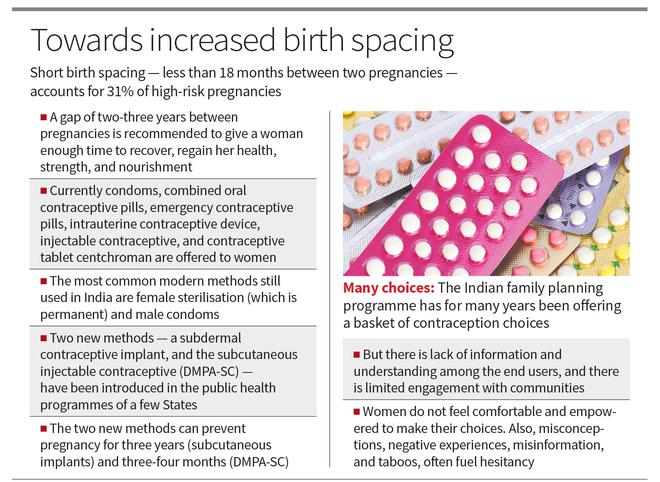The article on high-risk pregnancies in The Hindu on February 17 astutely drew public attention to a matter of great concern to the obstetrics and gynaecology community, but often overlooked by the rest of the country. India has great strides in decreasing maternal mortality — from an MMR of 130/100,000 live births in 2016-2018 to a MMR of 97/100,000 in 2018-2020 — by ensuring an increase in institutionalised deliveries and antenatal care, and improving women’s access to reproductive healthcare services. However, India still has a long way to go. While we celebrate our achievements, we must confront the challenges that persist, ensuring that every pregnancy is safe, and every woman is assured of the best possible care.
Acknowledging that India is now the most populous country in the world, most States have begun to see an optimal total fertility rate to ensure a more stable population growth. But pregnancy is not always easy to go through and abound with risk factors. The study referenced in the mentioned piece, illustrates that on average across India 49.1% pregnancies are high-risk. Short birth spacing — less than 18 months between two pregnancies — tops the list making up for 31% of the contributing risk factors, followed by previous adverse outcomes at 19%. These risks are disproportionately higher among women with limited or no education. In a telling comment, the researchers noted in the article, “nearly half of Indian women were not using contraception to delay their next pregnancy”. This is a stark reminder of a critical gap in our healthcare and educational systems: the underutilisation of continuous, consistent, effective, modern contraception. Women and their partners need more information about and access to modern contraceptive products to help them choose what’s best for their bodies.

Pregnancy is an intense physiological experience. A gap of two-three years between pregnancies is recommended to give a woman enough time to recover, regain her health, strength, and nourishment before she is ready to give birth to and take care of another child. Beyond the health benefits, when women exercise autonomy and agency over their bodies and reproductive decisions, they are not merely making personal choices; they are stepping into a realm of empowerment that has ripple effects beyond themselves. The economic benefits for example of such empowerment are profound.
Contraception or family planning helps ensure that women and men can choose if, and when they want to have children. The Indian family planning programme has for many years effectively offered a basket of choices for modern methods — and has reached many milestones in reducing what is known as the unmet need across most parts of the country. In the public sector, the current basket includes condoms, combined oral contraceptive pills, emergency contraceptive pills, intrauterine contraceptive device (IUCD), an injectable contraceptive (medroxyprogesterone acetate or MPA) and contraceptive tablet centchroman (Chhaya). Additionally, two new methods — a subdermal contraceptive implant (HI) and the subcutaneous injectable contraceptive (DMPA-SC) — have been introduced in the public health programmes of a few States (these two methods though aren’t available in the private sector just yet). They are easy to administer and can prevent pregnancy for three years (subcutaneous implants) and three-four months (DMPA-SC) at a time thus making them convenient and discreet choices. All these methods are safe, high-quality, and reversible.
But evidence suggests that the most common modern methods still in use in the country are female sterilisation (which is permanent), and male condoms (which are often incorrectly used — thus reducing their effectiveness — and women may not always have the choice to use them).
Awareness and evidence-based information are key to encouraging people to choose the best method for themselves. But a lack of information and understanding among the end users, limited engagement with communities can mean that people do not feel comfortable and empowered to make these choices. Misconceptions, negative experiences, misinformation, and taboos, often fuel hesitancy. Better counselling and stronger communication are imperative.
And that is where medical providers come in. As trusted credible sources of information, it is incumbent on medical providers to go the extra mile to ensure that people have accurate information that can help them exercise their right to choose. Contraception and family planning are no longer just about population; they are an essential part of a woman’s freedom, her agency, her bodily autonomy — her empowerment. When we make sure our women are empowered, we can unleash and realise the full potential of Nari Shakti.
(Jaydeep Tank is the president of The Federation of Obstetric and Gynaecological Societies of India (FOGSI))







